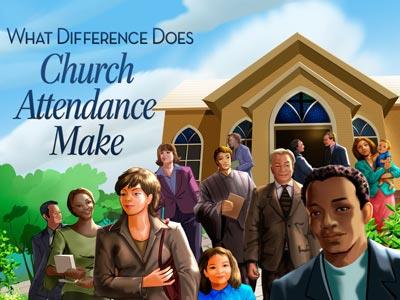-
Introduction: The Battle For The Better Babel Series
Contributed by Rolland Bouchard on Nov 28, 2017 (message contributor)
Summary: Introduction to a series of lessons on the church and the struggles it is facing in this post modern world. An indepth look at an image of the church found in Genesis 11, the Tower of Babel.
THE CHURCH
INTRODUCTION
Where do I begin? In a world of scattered thoughts, beliefs and values, it is hard to find a green light to “Go” on! I want to talk about so many items concerning the church, yet which topic has merit and which does not? Which topic is the best use of your time?
In recent weeks I have been studying the history of Christianity and all of the multi-faceted directions in which it journeyed. This history is a deep rabbit hole with many, many tunnels so it is understandable the question of where to begin. With that in mind, I thought it expedient, if nothing else, to begin with the need.
THE NEED
There are many books available today that address the issue of our day, modern vs. postmodern thinking. With the volumes upon volumes of authorship trying to figure out what is so different about the Post-modern generation; it is easy to see that there is something happening. A disruption in the “force” so-to-speak. A new paradigm has erupted causing discomfort and fear. Even worse, it has dislodged what was once a seemingly sound identity. I am the Minister for a small congregation of forty souls in a resort community in the southeast corner of Saskatchewan. Many of the members are second generation Christians within the, debatably, ninety-eight year old church. As far as I know from my brief tenure in this location, the congregation has consisted of this many souls for at least twenty of those ninety-eight years, evidenced in that the picture wall has not changed since the move to the resort six years ago. The younger generation of Christians has been well grounded in the methods and means of the previous generations teaching. They know where we have come from but do not see it as where we are going. Our services consist of the usual a cappella singing of six to eight songs, communion each Sunday, a message, a collection and a couple of prayers. The same as it has been done for the last ninety-eight years. There is an acceptation to this rule, however; our congregation has shifted from scheduled leadership to leadership teams allowing for a team of people to take charge of the service. The elements of the service are still the same, but now the method of deliverance has changed. Sometimes we’ll have the sermon first then the Lord’s Supper, and other times the opposite. Sometimes we’ll sing during communion, sometimes we won’t. The service is ultimately unchanged, and in the minds of many of the newer generations, has become stale and unwelcoming. More actually, it has become a reason to apologize to visitors for the lack of charisma and sometimes even sincerity during our morning activities.
I have spent the last eight years of my own personal ministry trying to specifically identify just what it is that has changed. I read various books theorizing what makes the next generation different from the last; I have reevaluated the reasons why I have believed as I have, I have all but thrown the proverbial “baby-out-with-the-bathwater” when it comes to my preconceptions and misinterpretations. I have allowed myself to be lead and to wander into new understandings and deeper insights, yet I feel very much as though I am only scraping the surface on what I think I know. Even now, some of my more recent conclusions are up for debate. This is, indeed, our human condition, yet it does not answer why my ninety-eight year old church has consistently maintained a membership of twenty to forty souls. What is the barrier keeping us from growing , from becoming what the world deems as a “successful congregation?” I believe the answer may lie in our identity, or lack-thereof! It seems abundantly clear to me that we want to have an age old identity, to look like we did consistently over the last fifty years, and yet grow!
I recently received this quote from a friend: It was taken from When Better Isn’t Enough: Evaluation Tools for the 21st-Century Church, by Jill Hudson. In the forward, Roy Oswald writes:
“... Jill Hudson explodes two myths we find in many congregations. The first is that, “We can grow without changing. ...” The second myth congregations hold on to for dear life is that, “We can change without conflict.”
Hudson later writes:
Everything has a cost. We know this in our heart, and yet we try to avoid it. We want the "old" church just as it was, with comforting hymns, informally claimed pews, and familiar liturgies. We also want the benefits of the "new church," full of young families and hope for the future. We want new believers who are mature in Christ and share the responsibilities of church membership. We don’t want anyone mad -- ever! We want it both ways. We want the comfort of the past and the promise of the future without alienating anyone.

 Sermon Central
Sermon Central



